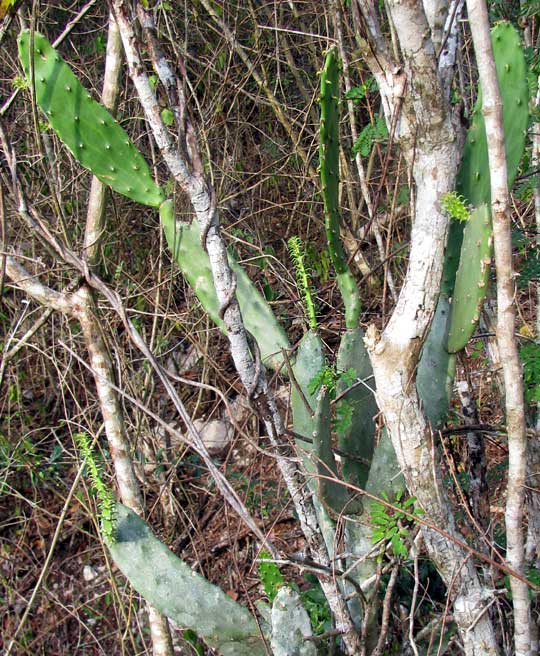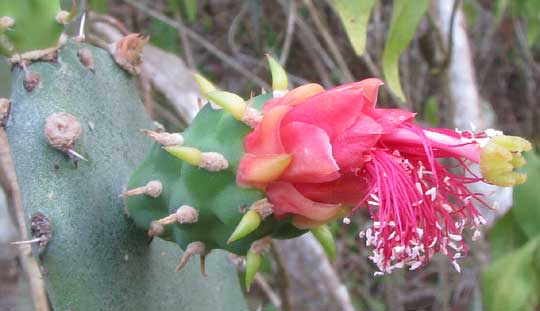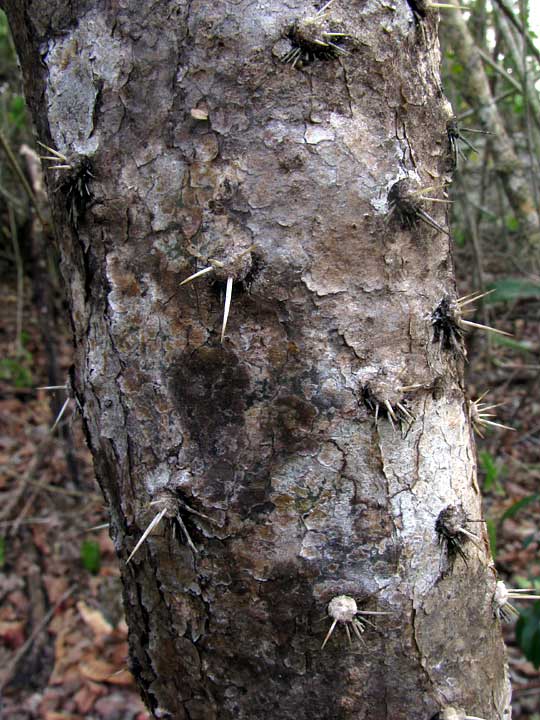Excerpts from Jim Conrad's
Naturalist Newsletter
from the March 7, 2010 Newsletter issued from Hacienda Chichen Resort beside Chichén Itzá Ruins, central Yucatán, MÉXICO; limestone bedrock, elevation ~39m (~128ft), ~N20.676°, ~W88.569°
NOPAL CACTUS IN FLOWER
Mexico is home to the greatest diversity of cactus species in the whole world, and the Yucatán has several species found nowhere else. However, the Yucatán's rarest and most interesting cacti cluster along the northwestern coast, which is the most arid part of the peninsula, not here in the central Yucatán. The plant list for the adjoining state of Quintana Roo lists fourteen cactus species for that state and I suspect that Yucatán state hosts a similar number.
One of the most common cacti around Hacienda Chichen one that thrives in thick scrub surrounded by small, leafy trees. You can see our species struggling for space in a leafless, dry-season thicket below:

Cactus naming can be hard, maybe because the taxonomists who work on plants just don't like dealing with big cactus pads that are so hard to dry and, especialy, don't like the spines. I think our cactus is NOPALEA COCHENILLIFERA, the Cochineal Nopal Cactus. I say "think" because normally you think of the Cochineal Nopal Cactus as being spineless or almost so, and you can see below that this one has at least a few small spines:

And the woody trunk is even spinier, as seen below:

The trunk rises three or four feet before abruptly sprouting green pads. The online Flora of North America says that usually it's spineless, but especially on older pads can have up to three spines. On our plant's trunk some of the spine bunches have more than three spines.
The Flora also says that "This species may have been selected for spinelessness in Mexico, much like Opuntia ficus-indica, to ease the culturing and collection of cochineal scale insects for red dye." That implies that wilder stock was spinier, and here we are in the home of the wild stock, so why shouldn't our plants be spinier than the spineless ones introduced into other parts of the world?
The quote given above speaks of a red dye, and that derives from tiny insect larvae who feed on this and other closely related cacti. It's an interesting subject and you might want to check out Wikipedia's cochineal page.
This cactus also produces the edible pads that in Mexico are eaten in large amounts once the pads are completely de-spined. This is a very important cactus species.
I like to think that the plants around my hut are descendents of plants the builders of Chichén Itzá took good care of, and over the centuries selected for planting those who had the least spines, until today they are practically spineless, but not quite, at least not on the ones here.